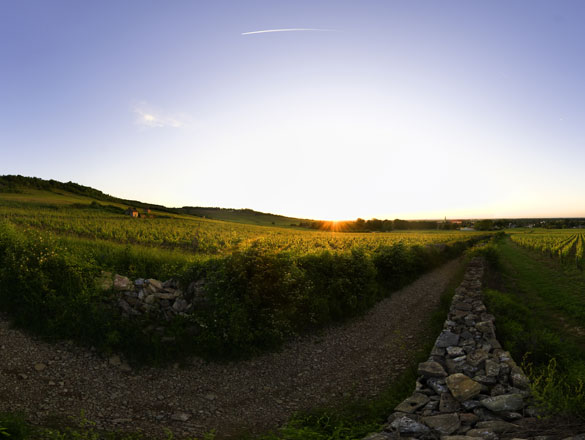

The vineyards of Bourgogne produce some great wines with a historical and international reputation. However, the region is not simply limited to its iconic appellations. In addition to its Village Premier Cru and Grand Cru AOCs, it also produces a range of wonderful Régionale and Village appellations to explore.
You will also find a full list of the Bourgogne’s Climats and lieux-dits on this page.
Check out the complete list of the 84 Bourgogne appellations.
However, your exploration has only just begun. Bourgogne wines have never before offered such high quality. Besides our range of internationally celebrated wines, try some of our lesser-known appellations where there are lots of surprises in store.
And for a fun way to find out more about the wines on offer, try out our “Which Bourgogne wine is right for me?” quiz, or check out Bourgogne Maps to take an interactive tour of the region.
Village appellation
VIGNOBLE DE LA CÔTE CHALONNAISE
8 février 1946
Mainly reds - Pinot Noir.
Whites - Chardonnay.
Area under production*:
1 hectare (ha) = 10,000 m2 = 24 ouvrées.
Reds: 250.30 ha (including 126.21 ha Premier Cru).
Whites: 58.86 ha (including 18.44 ha Premier Cru).
Average annual yield**:
1 hectolitre (hl) = 100 litres = 133 bottles.
Reds: 9,483 hl (including 4,594 hl Premier Cru).
Whites: 2,439 hl (including 811 hl Premier Cru).
*In 2022 **5-year average, 2017-2021
Appellation Village of the Côte Chalonnaise region (Saône-et-Loire).
This appellation includes 38 Premiers Crus Climats.
Producing communes: Givry, Dracy-le-Fort, Jambles.
The appellation GIVRY and GIVRY PREMIER CRU may be followed on the label by the name of their Climat of origin.

Givry is primarily a red wine made from Pinot Noir grapes. To the eye it presents a brilliant carmine or crimson colour set off by purplish highlights.
Its bouquet generally evokes violets, strawberries, and blackberries with variants which include liquorices, game, and sometimes spice (cloves). It is quite tannic in its early youth but after 3 to 5 years in the bottle it becomes suppler and fuller. It boasts a firm structure.
White Givry (Chardonnay) is a bright, limpid pale gold. It is redolent of aromas of honey or lemon with notes of lime and lily, then dried fruits (often toasted) come to the fore after the wine has aged some years. The mouth is delicate, with a balance between mellowness and acidity which guarantees its keeping qualities as well as giving it good length.

Red: its firm structure hides a delicate aromatic register which clearly makes it a fine match for pâtés, pies, and terrines, as well as cured ham and fine charcuterie. However, its distinction and solid construction are calculated to please meat-lovers. Fibrous joints, beefsteak, braised veal, stewed poultry, or a roasted fattened hen from La Bresse will respond to its dense tannins.
It is equally well-matched with soft-centred cheeses: Camembert, Brie de Meaux, Reblochon.
Serving temperature: around 15 °C.
White: fish in light sauces, freshwater pike cooked with butter and white meats bring out its finest qualities. As far as cheeses are concerned, try pressed-curd cheeses such as Saint-Nectaire and Cantal.
Serving temperature: 11 to 13 °C.

This Côte Chalonnaise wines was the favorite of the French King Henri IV (1553-1610). It is produced in the communes of Givry (with its hamlets Poncey, Cortiambles and Russilly), Dracy-le-Fort, and Jambles – a corner of Paradise for wine-growing, surrounding what has been a fortified location since the Middle Ages. Its AOC dates from 1946. As Philippe Sollers wrote in his autobiography “Being born into a culture of French wine is a deeply fortifying and sobering experience that becomes a part of you. As a child, one does not even need to read Rabelais - his words live and speak all around”.

Brown soils derived from the breakdown of Oxfordian Jurassic limestones and clayey-limestones. Most of the vines are planted facing East-South-East or due South at altitudes between 240 and 280 metres, or slightly higher in the case of the Climat named Les Bois Chevaux.
